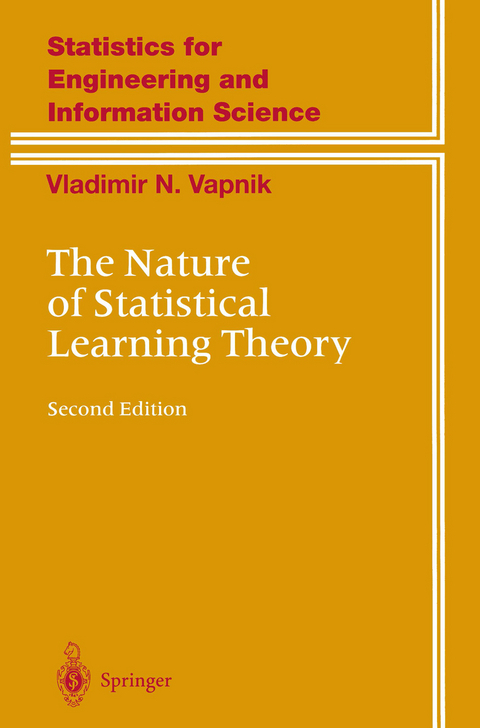
The Nature of Statistical Learning Theory
Seiten
2010
|
Softcover reprint of hardcover 2nd ed. 2000
Springer-Verlag New York Inc.
978-1-4419-3160-3 (ISBN)
Springer-Verlag New York Inc.
978-1-4419-3160-3 (ISBN)
The aim of this book is to discuss the fundamental ideas which lie behind the statistical theory of learning and generalization. It considers learning as a general problem of function estimation based on empirical data. Omitting proofs and technical details, the author concentrates on discussing the main results of learning theory and their connections to fundamental problems in statistics. These include: * the setting of learning problems based on the model of minimizing the risk functional from empirical data * a comprehensive analysis of the empirical risk minimization principle including necessary and sufficient conditions for its consistency * non-asymptotic bounds for the risk achieved using the empirical risk minimization principle * principles for controlling the generalization ability of learning machines using small sample sizes based on these bounds * the Support Vector methods that control the generalization ability when estimating function using small sample size. The second edition of the book contains three new chapters devoted to further development of the learning theory and SVM techniques. These include: * the theory of direct method of learning based on solving multidimensional integral equations for density, conditional probability, and conditional density estimation * a new inductive principle of learning. Written in a readable and concise style, the book is intended for statisticians, mathematicians, physicists, and computer scientists. Vladimir N. Vapnik is Technology Leader AT&T Labs-Research and Professor of London University. He is one of the founders of
Introduction: Four Periods in the Research of the Learning Problem.- 1 Setting of the Learning Problem.- 2 Consistency of Learning Processes.- 3 Bounds on the Rate of Convergence of Learning Processes.- 4 Controlling the Generalization Ability of Learning Processes.- 5 Methods of Pattern Recognition.- 6 Methods of Function Estimation.- 7 Direct Methods in Statistical Learning Theory.- 8 The Vicinal Risk Minimization Principle and the SVMs.- 9 Conclusion: What Is Important in Learning Theory?.- References.- Remarks on References.- References.
| Erscheint lt. Verlag | 1.12.2010 |
|---|---|
| Reihe/Serie | Information Science and Statistics |
| Zusatzinfo | XX, 314 p. |
| Verlagsort | New York, NY |
| Sprache | englisch |
| Maße | 155 x 235 mm |
| Themenwelt | Informatik ► Theorie / Studium ► Künstliche Intelligenz / Robotik |
| Mathematik / Informatik ► Mathematik ► Statistik | |
| Mathematik / Informatik ► Mathematik ► Wahrscheinlichkeit / Kombinatorik | |
| Naturwissenschaften | |
| ISBN-10 | 1-4419-3160-0 / 1441931600 |
| ISBN-13 | 978-1-4419-3160-3 / 9781441931603 |
| Zustand | Neuware |
| Informationen gemäß Produktsicherheitsverordnung (GPSR) | |
| Haben Sie eine Frage zum Produkt? |
Mehr entdecken
aus dem Bereich
aus dem Bereich
Eine kurze Geschichte der Informationsnetzwerke von der Steinzeit bis …
Buch | Hardcover (2024)
Penguin (Verlag)
28,00 €
was sie kann & was uns erwartet
Buch | Softcover (2023)
C.H.Beck (Verlag)
18,00 €


